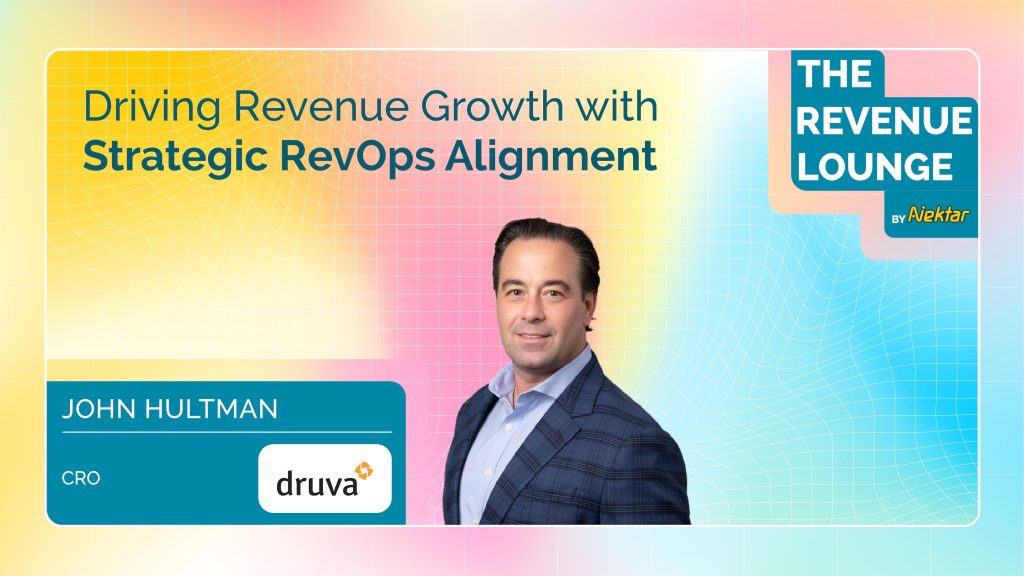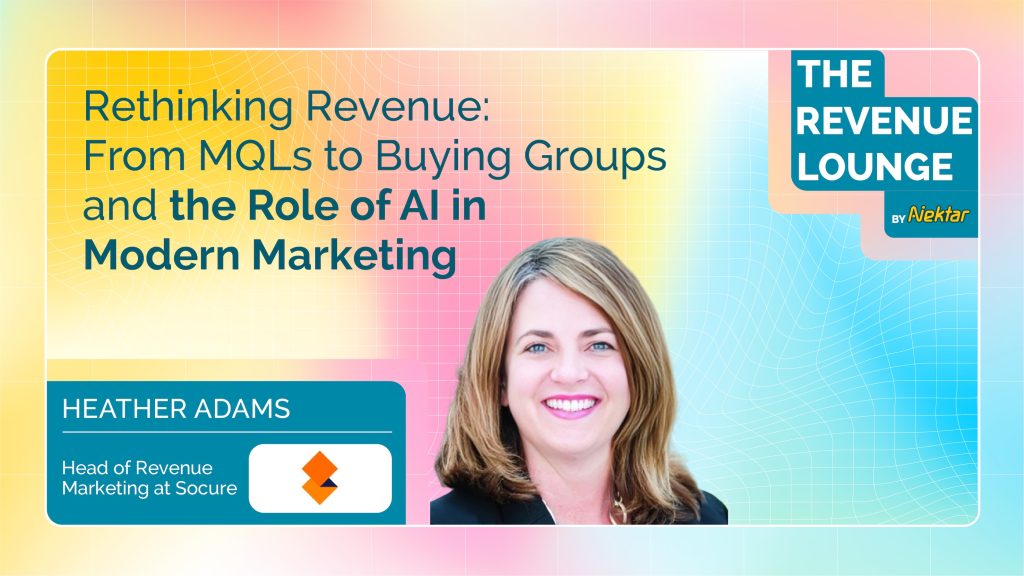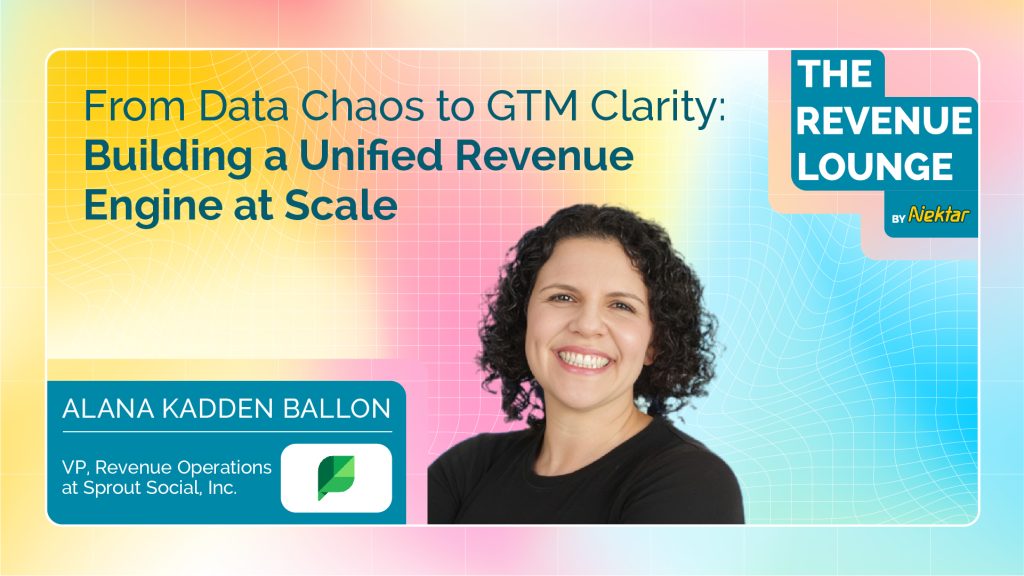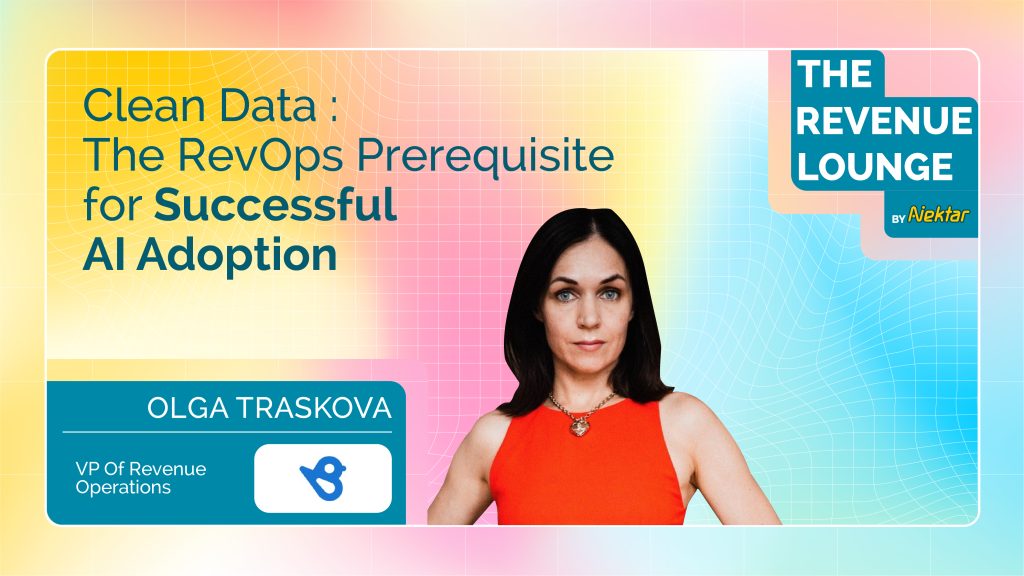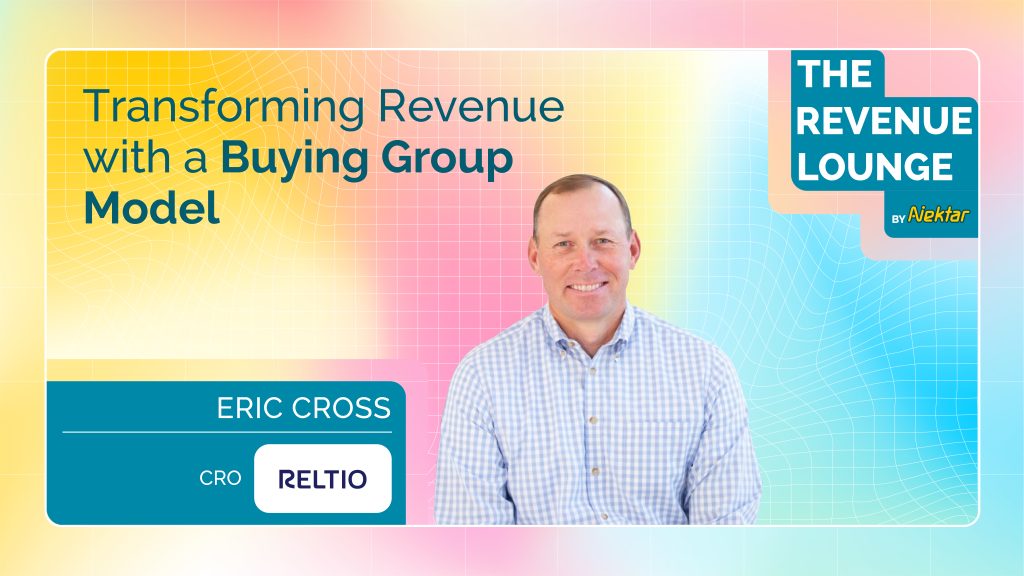Building a Unified Revenue Engine: How Druva Aligns GTM and RevOps for Growth
Building a Unified Revenue Engine: How Druva Aligns GTM and RevOps for Growth A conversation with John Hultman, Chief Revenue Officer at Druva. The path to revenue growth isn’t paved solely by sales excellence—it’s constructed through the strategic orchestration of all go-to-market (GTM) functions: sales, marketing, and customer success. John Hultman, CRO of Druva, shares his playbook for building a cohesive GTM engine by unifying data, engagement metrics, and operations under a single strategic vision. From tackling disjointed KPIs to uncovering hidden churn signals and designing intent-driven expansion plays, John offers a masterclass in what it means to lead with RevOps in the modern age. Facebook Twitter Youtube Why Alignment Across Revenue Teams is Non-Negotiable “Everybody looks at metrics vertically—‘I’m green’—but you’re still not hitting the goal. Flip it horizontally. Work backward from the outcome.”— John Hultman, CRO at Druva One of the biggest traps GTM organizations fall into is siloed success. Each team—marketing, SDRs, AEs, CS—operates in its own KPI bubble. While each may hit their own numbers, the company still misses revenue targets. John calls for a complete reorientation: from vertical success to horizontal alignment. Vertical vs. Horizontal KPI FocusBelow is an infographic that illustrates how traditional KPI silos compare to outcome-focused, horizontal alignment across GTM teams: Redefining Metrics: What Actually Moves the Needle Instead of tracking surface-level KPIs like MQLs or number of meetings, John aligns his teams around what truly impacts revenue: Metric Why It Matters Marketing-Generated Bookings Ties campaigns directly to revenue outcomes Lead Follow-Up Time Reveals AE responsiveness and SDR effectiveness Opportunity Stage Duration Detects pipeline friction points Expansion Rates Measures long-term account growth Churn Risk Scores Early indicators of customer dissatisfaction By standardizing these metrics across departments, teams can see where things break down and act fast. “It’s not about the quantity of pipeline. It’s the quality and the conversion that matter.” https://www.youtube.com/watch?v=xQlouc3eOpw Breaking Through the Noise: New Realities in Prospecting Prospecting is harder than ever. According to industry data shared at B2BMX, first meetings are down 30–50% year-over-year. Buyers are overwhelmed by outreach—emails, cold calls, DMs—and are increasingly unresponsive. John’s solution? Shift the lens from quantity to cost-effectiveness: Analyze Customer Acquisition Cost (CAC) across different motions (MQLs vs OEM vs MSP vs Channel). Explore non-traditional channels that drive better ROI. Focus on signal-based marketing instead of shotgun-style outreach. “A traditional MQL model is expensive. Every touch—tools, SDR, data cleansing—adds up.” The Power of Buying Groups and Intent Signals B2B buying is no longer a one-person show. Recent research from 6sense shows the average buying group includes 11 stakeholders. But traditional CRMs typically capture only one. “Buying signals help us understand if something’s heating up—or if churn is around the corner.” Druva uses platforms like ZoomInfo and 6sense to: Detect intent across personas Identify expansion opportunities Predict churn within current accounts These platforms provide visibility not just into net-new accounts, but also within existing customers—surfacing signs of disengagement or interest in new products. Scaling Expansion with Dedicated Teams Druva’s go-to-market strategy separates new logo acquisition from expansion: Team Focus Area Hunters Land new accounts and manage first renewal Farmers (Expansion AEs) Drive adoption across additional workloads Expansion AEs work closely with CSMs, partners, SEs, and TAMs to ensure full account penetration post-sale. “I was unsure about the split at first—but now I’m a believer. The expansion team builds deep relationships that unlock full value.” Retention is a Science: Detecting Risk Before It’s Too Late John outlines a multi-layered approach to protect recurring revenue: Risk Signals Druva Tracks: Decline in product usage Surge in support tickets Large-scale data exports (potential migration) Absence from events and webinars Lower NPS or QBR engagement Cadence by Segment: Customer Tier Engagement Model Enterprise Quarterly QBRs, 6-month renewal prep Mid-Market Biannual reviews SMB/Long-Tail 120-day renewal triggers via AE or renewals rep “We built AI propensity models to flag expansion and churn risks. These are crucial for staying ahead.” Data Without Insight Is Just Noise “Salesforce is our source of truth—but it’s not about the data. It’s about how you simplify and standardize it.” Druva pulls data from multiple sources—Salesforce, Sigma, Clari, Atrium—and aggregates it into simplified dashboards. Standardization ensures teams debate strategy, not whose numbers are right. John’s RevOps team is tasked not just with collecting data—but surfacing actionable insights. Pipeline Visibility: A Continuous Feedback Loop John’s pipeline framework includes three lenses: Lens Use Case In-Quarter Pipeline Immediate revenue forecasting Next-Quarter Pipeline Forward visibility to avoid chase mode Source Breakdown Channel health by OEM, Direct, Partner The RevOps team cuts data by geo, function, and team to uncover root causes of pipeline issues—before they impact revenue. Strategic Account Planning and Re-engagement Expansion depends on reaching beyond the initial champions. Druva ensures sellers don’t just rely on admins or tool users—they map out all key stakeholders and re-engage them as new opportunities emerge. “They may have disengaged—but they’ll re-engage when the right workload comes up. That’s where good account planning pays off.” Managing Change Across GTM Functions Unifying teams under one strategy isn’t just a data challenge—it’s a people challenge. “You can’t just communicate once. You need continuous communication with context—why we’re doing this, why now, and how it helps them.” John emphasizes: Setting a shared North Star Explaining the “why” behind every change Making everyone feel part of the journey The New Buyer Journey: Less Time with Sales, More Time in Research “Buyers spend 9 out of 12 months doing research—without ever talking to your sales team.” This shift forces GTM teams to: Use intent data to intercept buyers early Provide helpful content during research Equip sellers with consultative tools—not just decks Golf outings and 5-hour lunches are over. Buyers want speed, value, and insight. Final Thoughts: Strategic Growth in a Changing World “You get pulled into the day-to-day. You have to fight for time to think strategically.” For John, success as a CRO means balancing operational excellence with long-term vision—aligning every function under one strategy, and enabling teams with the right data,
